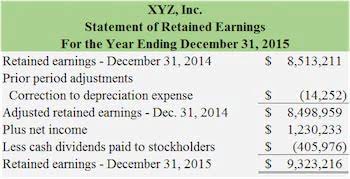
Then in this case it is essential to follow the units of production depreciation method. The units of production rate is equal to the depreciable fixed asset carrying value (i.e. the cost basis net of the salvage value assumption) divided by the estimated number of production numbers, which comes out to $0.50. The units of production method attempts to recognize depreciation based on the actual “wear and tear” of the fixed asset on the balance sheet. Based on the above formulas, you can find the accumulated depreciation by adding up the depreciation expenses for the total number of units your fixed asset has produced so far. The unit of production method calculates the amount of asset’s value that has been lost upon https://www.bookstime.com/articles/trade-discount its usage. However, other methods account for the depreciation over the financial period regardless of whether it was used.

Units of Production Method
- Therefore, it must be understood that a right phrase is a unit of production and not the units of production.
- Some years the asset will be used more while some years the asset will be used less.
- However, MACRS did not accurately track losses and profits that an asset generate over time like the unit of production method.
- The unit of production method becomes useful when an asset’s value is more closely related to the number of units it produces than to the number of years it is in use.
- For example, a factory robot is more likely to experience wear and tear as it produces hubcaps than a piece of software as it produces spreadsheets.
- The concept of the unit of production is crucial for businesses as it allows them to track and measure their output.
- In some cases, the residual value may be zero because the item is assumed to be worthless at the end of its natural life.
Divide the original cost of the equipment, minus its salvage value, by the expected number of units the asset should produce given its useful life. Then, multiply that quotient by the number of units used during the current year. The total depreciation amount for a year is determined when the total depreciable amount of the asset is divided by the estimated total production multiplied by the units. This figure is then multiplied by the total number of units that have been produced in the year.
- Depreciation doesn’t correlate with a business’s cash flow, which can make it a confusing concept.
- For using this method of units of production, the business owner has to elect to exclude from MACRS within the due date of the return for the tax.
- This increases the accumulated depreciation to $30,000 and the net book value to $12,000.
- The Units of Production Depreciation Method, also known as the Units of Output Method, plays an important role to determine the charges on the assets depreciation.
- Each Widget you produce using your WidgetMaker 3000 reduces the value of the machine by $0.10.
- For instance, the straight-line method is used for internal reporting, and accelerated depreciation methods are applied for tax purposes.
Unit Of Production Method Vs. Units Produced
- Similarly, in a bakery, the unit of production could be a loaf of bread.
- This depreciation method helps you calculate how to reduce the value of a fixed asset in your business based on the number of units it produces in a given period of time.
- It is usually calculated based on a period of time, but it can also be calculated based on usage over a period of time.
- In many manufacturing industries, the assets are depreciated not based on their useful life.
- In effect, the depreciation expense recorded each year directly reflects how much of the fixed asset was used.
If the U.S. requires more apparel, then China will produce the chemical itself. If China requires more chemicals, then the U.S. will produce the apparel itself. As discussed earlier, that unit of production method cannot be used for tax purposes. To use this method, the owner must elect exclusion from the MACRS by the return due date for the tax year when the property is initially placed into service.

Question
Once the depreciation per unit is calculated, the overall depreciation expense can be calculated. Now you’ve to find the depreciation of the machine according to the unit of production method. As per estimates, the machine was expected to give 7000 kgs or 280,000 units output. The capital assets benefit an organization for more than one accounting period. Therefore, the purchase of such an asset is debited to the asset account instead of the expense account.

Journal Entries in Books Of Accounts
However, this method of depreciation cannot be applied to get tax deductions. The companies working in the industries having seasonal demand can use the unit of production method. It will accurately match the revenues with the expenses in the financial statements. The units-of-output depreciation method is based on the assumption an asset will produce a fixed number of units over its lifetime. The loss in value of the asset (depreciation expense) during an accounting period is directly related to units of production or units of output are alternative terms for the the output of the asset in that same accounting period.

- The straight-line method and unit of production method are two ways to compute how a fixed asset depreciates, or loses value, over a period of time.
- In particular, the units of production method should not be used if usage of the fixed asset varies substantially each period because tracking the utilization of the asset will become a time-consuming task in itself.
- This method effectively allocates the asset’s cost over its productive capacity.
- The added effort of using units of production depreciation gives you better insights into the true cost of running your equipment.
- Multiple select question.Its value depends on a country’s monetary or economic policy.It is not backed by any assets.It is not issued by a central bank.Its value depends largely on the sup…
- The process of systematic allocation of an asset’s value over its’s useful life is called depreciation.
- Then, multiply that quotient by the number of units used during the current year.
Similarly, the unit of production method is a depreciation method used across various industries and business entities to systematically allocate asset costs. This article will go through the unit of production method, how it works with an example, and a comparison with other depreciation methods. The concept of the unit of production is crucial for businesses as it allows them to track and measure their output. By quantifying the units produced, companies can evaluate their productivity, assess the efficiency of their production processes, and make informed decisions regarding resource allocation and capacity planning. If you’re still not sure whether it makes sense for you to use the units of production depreciation method for your business, consult with your accountant or bookkeeper. So at unearned revenue the end of the year, West will take its $9 of depreciation per unit and multiply it by the 5,000 units produced to get the depreciation expense for the period.
Leave a Reply